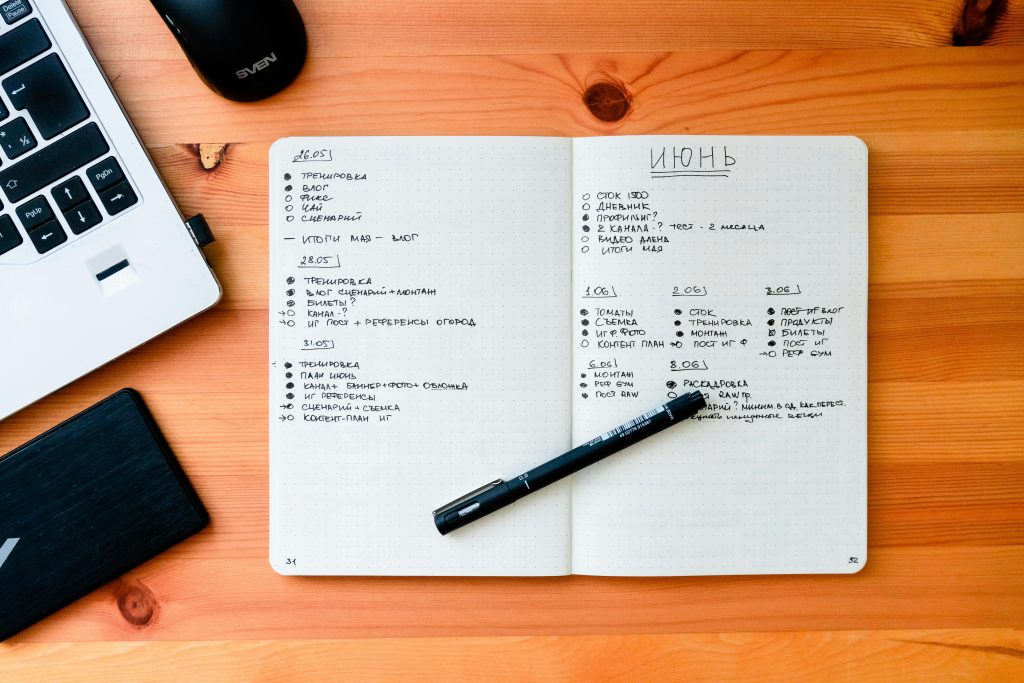Let’s be honest. For most of us, thinking about money feels like staring at a tangled mess of headphones. You know there’s order in there somewhere, but the thought of picking it apart is so overwhelming that you just shove it in your pocket and hope for the best.
You tell yourself:
- “I’ll start a budget next month.”
- “I don’t even know where to begin.”
- “It’s just too stressful to look at.”
- “I don’t make enough to bother.”
Sound familiar? You are not alone. Money stress is a heavy, invisible backpack we carry around every single day. It affects our sleep, our relationships, and our peace of mind.
But what if I told you that in just 90 days, you could go from feeling financially overwhelmed to being in confident control? You don’t need a magic lottery ticket or a huge inheritance. You just need a plan.
This is your Financial Reset Guide. This isn’t about becoming a Wall Street guru or pinching pennies until you scream. It’s about taking simple, human steps to untangle those headphones and finally see the whole picture. It’s about going from reactive (“Can I afford this?”) to proactive (“Here’s what my money is doing for me.”).
We’re going to break this down into a clear, 90-day mission. No complex jargon, just straight talk and actionable steps.
Your 90-Day Financial Reset Mission:
- Days 1-30: The Financial Snapshot & Spending Detox (Facing the Truth)
- Days 31-60: Building Your Financial Machine (Creating Systems That Work)
- Days 61-90: Fortifying Your Future (Planning for the Good Stuff)
Ready to lose that heavy backpack? Let’s begin.
Days 1-30: The Financial Snapshot & Spending Detox

This first month is all about truth and transparency. You can’t fix what you don’t understand. This phase might feel a little uncomfortable, like stepping on a scale after the holidays, but it is the most crucial step. Courage, my friend!
Week 1: The “No-Judgment” Financial Inventory
Your only goal this week is to gather data. No freaking out, no guilt. You’re a scientist collecting specimens.
Step 1: The “Brain Dump” Debt List.
Grab a notebook or open a spreadsheet. List out every single debt you have. I mean all of them:
- Credit Card 1 (Bank of America): $2,300, 19% APR
- Credit Card 2 (Chase): $850, 24% APR
- Student Loan: $18,000, 5% APR
- Car Loan: $10,500, 6% APR
- Money owed to your cousin Dave: $100 (yes, write it down!)
For each, write the total amount, the interest rate (APR), and the minimum monthly payment. Seeing it all in one place is powerful. It’s no longer a bunch of scary, separate monsters; it’s a single list you can tackle.
Step 2: The “Where Does It All Go?” Spending Tracker.
For one week, I want you to track every single dollar you spend. And I mean every single one.
- Coffee: $4.50
- Lunch out: $12.75
- Netflix: $15.99
- Groceries: $87.43
- Impulse Amazon purchase: $24.99
You can do this in a notes app on your phone, on a piece of paper in your wallet, or using a free app like Mint. The method doesn’t matter; the consistency does. You will be shocked at where your money is actually going. This isn’t about shaming yourself; it’s about discovering your spending patterns.
Week 2: The “Tell Your Money Where to Go” Budget
Now that you know where your money has been going, it’s time to tell it where to go. Forget complicated, color-coded budgets you’ll never stick to. We’re going to use a simple, powerful method.
Introducing the “50/30/20 Rule” (A Flexible Framework):
This rule suggests you break your take-home pay (that’s your pay after taxes) into three categories:
- 50% for Needs: These are your essentials. Rent/Mortgage, utilities, groceries, minimum debt payments, basic transportation. The stuff you literally can’t live without.
- 30% for Wants: This is your fun money! Dining out, hobbies, shopping, streaming services, vacations. This category gives you breathing room and prevents you from feeling deprived.
- 20% for Savings & Debt Paydown: This is your future money. Emergency fund, retirement savings, and any extra payments on your debt from your list.
Your Action: Take your monthly take-home pay and plug it into this framework. Does it fit? Maybe your “Needs” are 60%. That’s okay! The goal is to see the numbers and start making conscious choices. Adjust the percentages to fit your life. The point is to have a plan.
Week 3 & 4: The “Spending Detox”
You’ve tracked your spending and you have a basic budget. Now, let’s create some momentum. For the next two weeks, you’re going on a “Low-Buy” detox.
This isn’t about starvation. It’s about awareness. The goal is to press pause on automatic spending.
The Rules of the Detox:
- No non-essential online shopping. Unsubscribe from promotional emails and delete shopping apps from your phone if you have to.
- Plan your meals. Grocery shop with a list and cook at home. This is one of the biggest money-savers out there.
- Pause subscriptions you don’t actively use. That gym membership, that streaming service you forgot about. You can always re-subscribe later.
- Find free fun. Instead of meeting friends for an expensive dinner, suggest a potluck, a hike, or a game night.
At the end of this month, you will have done the hardest part: facing the truth. You know your numbers, you have a basic plan, and you’ve proven to yourself that you can control your spending. Give yourself a huge pat on the back!
Days 31-60: Building Your Financial Machine

Month one was about stopping the bleeding. Month two is about building your financial immune system. We’re moving from defense to offense by creating simple, automated systems.
Week 5: The “Sleep Tight” Emergency Fund
Your single most powerful weapon against financial stress is an emergency fund. This is not for a new PlayStation or a vacation. This is for true emergencies: a sudden car repair, a medical bill, a job loss.
It’s your “oh, crap” fund. And it lets you sleep at night.
The “Starter” Goal: $1,000.
If you have nothing saved, this is your first target. It’s enough to handle most small emergencies without reaching for a credit card.
Where to put it? Open a separate, high-yield savings account at an online bank (like Ally, Capital One 360, or Discover). Why online? They typically offer much better interest rates than traditional brick-and-mortar banks. Don’t link this account to your debit card. Make it a little inconvenient to access, so you’re not tempted to dip into it.
How to fund it? Look at your spending detox. Where did you find “extra” money? Can you sell some old stuff on Facebook Marketplace? Can you put any tax refund or side hustle money here? Be relentless until you hit that $1,000 goal.
Week 6: The “Debt Snowball” Takedown Plan
Remember that debt list from Week 1? It’s time to attack it. We’re going to use a method called the Debt Snowball because it’s powered by psychology and quick wins.
Here’s how it works:
- Look at your list of debts. Order them from the smallest balance to the largest balance, regardless of the interest rate.
- Make the minimum payment on every single debt every month. No exceptions.
- Now, find any extra money you can in your budget (from your spending detox, your side hustle, etc.). You will throw every extra dollar at the debt with the smallest balance.
- Once that smallest debt is GONE, you take the total amount you were paying on it (the minimum + the extra) and now roll that entire amount over to attack the next smallest debt.
Why this works: The quick win of completely paying off a debt—even a small one—gives you a massive hit of motivation. That momentum fuels you to keep going. It feels amazing and proves that your efforts are working.
Week 7 & 8: Automate, Automate, Automate!
You are a human being with limited willpower. Don’t rely on it. Set up systems that do the right thing for you, automatically.
Set up these two automatic transfers on the same day you get paid:
- Pay Yourself First Transfer: Automatically move money from your checking account to your new emergency fund savings account. Even if it’s just $25 per paycheck. This makes saving effortless.
- Debt Attack Transfer: Automatically move your “extra” debt snowball payment to a separate savings account. Then, when the credit card bill is due, you manually make the larger payment. This keeps the money out of your spending account’s reach.
Automation is like putting your finances on cruise control. It ensures you’re always moving in the right direction, even on months when you’re tired or busy.
Days 61-90: Fortifying Your Future

The heavy lifting is done. You’re spending consciously, you’re saving automatically, and you’re chipping away at your debt. This last month is about looking ahead and making your money work for you in the long term.
Week 9: Future-Proofing Your Finances
Let’s make sure your hard work is protected.
1. Check Your Credit Score (For Free!).
Your credit score is your financial report card. Go to a free site like AnnualCreditReport.com (the official, government-sanctioned site) and get your free credit report. Check it for errors. Knowing your score is the first step to improving it.
2. Do a “Bill Audit.”
Go through your recurring bills and see if you can negotiate or find a better deal.
- Call your internet/cable provider and ask for a promotional rate.
- Shop your car insurance. Get a few quotes from other companies.
- Look at your cell phone plan. Are you paying for data you don’t use?
A few phone calls could save you hundreds of dollars a year.
Week 10: The “What’s It All For?” Goal Setting
Money is a tool. What do you want to build with it? Without a goal, saving feels pointless.
Set S.M.A.R.T. Financial Goals:
- Specific: “I want to save for a vacation” is vague. “I want to save $2,000 for a trip to Italy in 18 months” is specific.
- Measurable: You can track your progress ($2,000 total).
- Achievable: It’s a stretch, but not impossible.
- Relevant: It truly matters to you and your happiness.
- Time-Bound: You have a deadline (18 months).
Write down one short-term goal (within a year) and one long-term goal (1-5 years). Post them somewhere you can see them. This is your “why.”
Week 11 & 12: The “Raise Your Income” Mindset
There’s a limit to how much you can cut from your budget, but your earning potential is much more flexible. Now that you have your financial house in order, think about how you can bring more in.
This doesn’t necessarily mean getting a second job. It could be:
- Asking for a raise at your current job, armed with a list of your accomplishments.
- Learning a new skill online that could make you eligible for a promotion.
- Starting a small side hustle based on a hobby—freelance writing, dog walking, selling crafts on Etsy.
- “Upskilling” with free online courses to make your resume more attractive.
When you have a handle on your spending, every extra dollar you earn can go directly towards your goals, supercharging your progress.
Your Life After the 90-Day Reset

So, what happens on Day 91?
You won’t be a millionaire (probably). But you will be something more valuable: financially conscious.
You will have a system. You’ll know where your money is going, you’ll have a small buffer against life’s surprises, and you’ll have a plan for your debt. The anxiety will have been replaced with a quiet confidence.
You’ll no longer dread checking your bank account. You’ll make spending decisions with clarity and purpose. A flat tire will be an inconvenience, not a catastrophe.
This 90-day reset isn’t a one-time diet. It’s a new way of living. It’s about taking back control, one simple step at a time.
Your future self is waiting, and they are so grateful you started today. Now, go grab a notebook and start that “no-judgment” list. You’ve got this.






